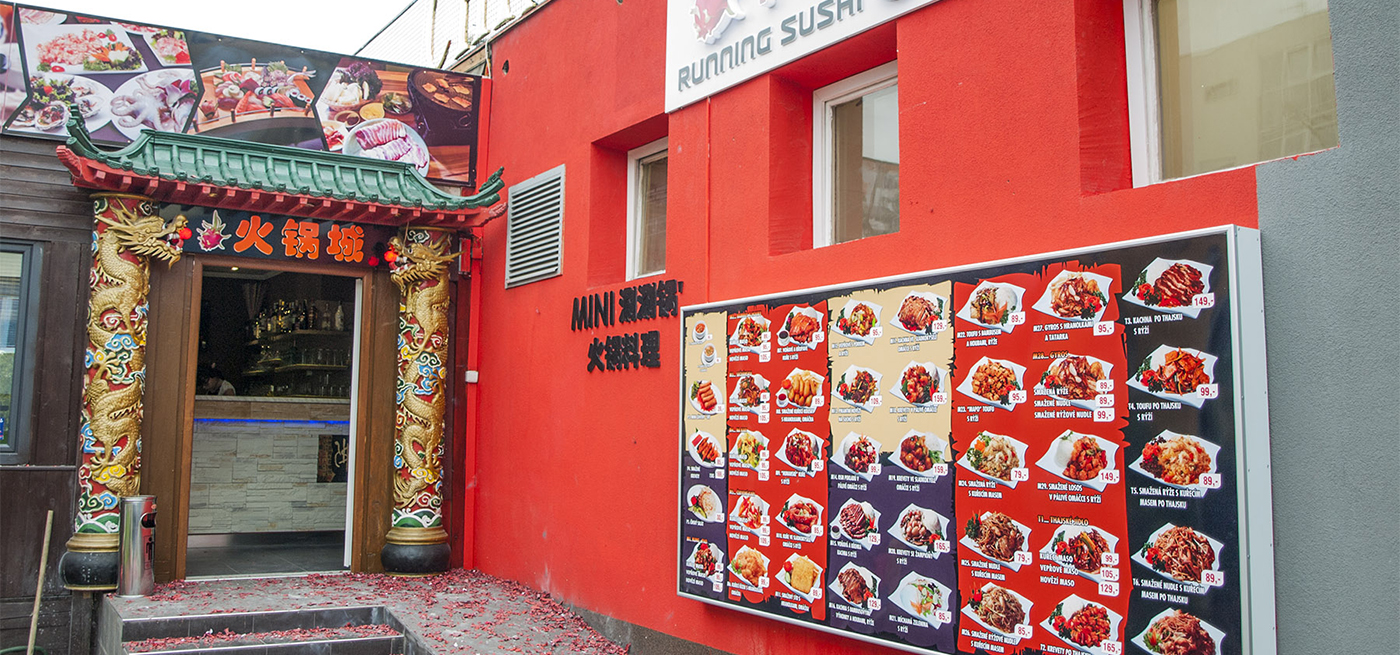Shanghai International Studies University (SISU) – July 10, 2015
Chinese Restaurants Adapt to Czech Tastes
By Xu Qianqian
PRAGUE — At the Chinese Restaurant Peking, a group of young guys come in. The waiter came up to them and immediately distributed the fast Chinese food menus.
He Lianping, one of the owners of Chinese Restaurant Peking, said local Czechs hardly eat traditional Chinese food unless they are taken by their Chinese friends, and even then they prefer to eat western-style Chinese food because it is faster and cheaper.
He Lianping, who is 62 years old now, came from Zhejiang, China in 1993. She chose Prague because of its beauty. He and her partner started the Chinese Restaurant Peking in 1993. This was He’s second restaurant.
Like most Chinese restaurants, it has two types of menus, one with all traditional food written in Chinese for Chinese customers and the other with all western-styled Chinese food written in Czech for Czech customers. The western-style Chinese food is also much more convenient and cheaper. For example, one fast Chinese dish with rice and meat is 99 korunas while one simple fried broccoli is 180 korunas in Chinese Restaurant Peking. According to He, traditional Chinese food is mostly for tourist groups from China.
“At noon there are more Czechs and at night there are more Chinese because we end the west-Chinese food serving at 3 pm.” said He, “but there are also some Czechs coming to have traditional Chinese food once they had been introduced by their Chinese friends.”
He said the most popular dishes are Kung Pao Chicken and Beijing Roast Duck.
Chinese restaurants were small in number in 1993, but then more and more people came to run Chinese restaurants in Prague, according to He. Many of them used to be workers in older Chinese restaurants in the Czech Republic.
Yao Jianrong, the 49 year-old owner of Mei Xin Restaurant, is one of them. Yao came to Prague in 1992 and started his own restaurant in 2001. “I once worked for a restaurant and then I made some money. I started my own business,” said Yao.
Wang Qinwen, the owner of Xin Tian Hao Restaurant, said there are more than 400 Chinese restaurants now in Prague. Since there are more and more Chinese restaurants in recent years, they have to compete and force prices down to attract local Czechs, according to He.
The forms of Chinese restaurants are also more diverse now. Chinese Restaurant Peking, for example, has 9 boxes in which people can sing and have fun.
“We added new food forms such as Japanese-Chinese set meal with sushi,” said Wang, “and we also have self-service hot pot.”
Wang said the taste of Chinese and Czech customers have some differences. The waiter will tell the cook that it is a Chinese customer so that the cook will add less salt, while Czech customers get more salt.
The style of Xin Tian Hao Restaurant is totally in Chinese with red Chinese decorations and classical music. Decorations, including paintings, lights, and calligraphy, were all transported from China, according to Wang.
A man named Mrazek, who is a local Czech roadman, has just finished his lunch in Mei Xin Restaurant and said, “I like eating fast Chinese food. It’s cheap and delicious and I just don’t want to try the traditional Chinese food.”
Most of the staffs such as the waiters and chefs are Chinese, and some are Vietnamese. The waiters all have a good proficiency of the Czech language. Wang states that nowadays it is more expensive to hire a Chinese rather than a Vietnamese worker because it is harder for the Chinese to get the visas to the Czech Republic.
He, Wang and Yao all said the business nowadays is much harder because of the economic bust in the whole Europe.
 Education
Education